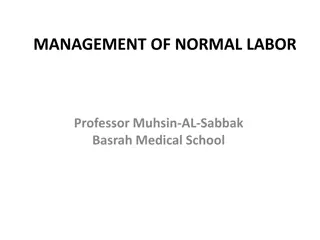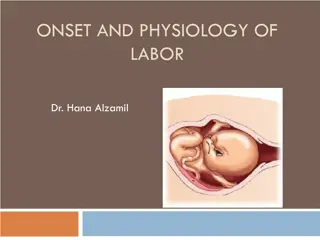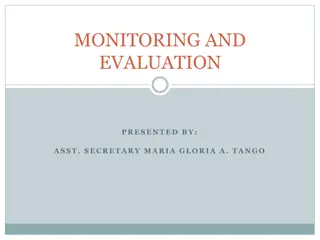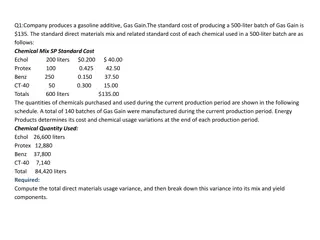Understanding the Importance of Partograph in Monitoring Labor Progress
Partograph is a crucial tool for healthcare providers to monitor labor progression and ensure the well-being of both mother and baby. This article covers the significance of using a partograph, the frequency of recording parameters during labor, and how to plot and interpret findings for effective decision-making. Learn how to identify data, assess fetal condition, and record status of membranes while plotting a partograph. Understanding the partograph can aid in timely interventions and improving maternal and neonatal outcomes.
Download Presentation

Please find below an Image/Link to download the presentation.
The content on the website is provided AS IS for your information and personal use only. It may not be sold, licensed, or shared on other websites without obtaining consent from the author. Download presentation by click this link. If you encounter any issues during the download, it is possible that the publisher has removed the file from their server.
E N D
Presentation Transcript
Learning Objectives By the end of the session, the learners will be able to: Describe the significance of using partograph in monitoring the progress of labour, fetal and maternal condition Describe the frequency of recording different parameters during labour Plot the case study findings and interpret the filled partograph for decision making 2
What is a Partograph? Partograph is the most important tool for health workers at any level to assess the progress of labour and take appropriate actions Graphic recording of the progress of labor and condition of mother and fetus Labor record , thus reduces paper work Partogrpah is applicable for the active phase of first stage of labour i.e., from cervical dilatation >=4cm to full dilatation of cervix 3
Plotting a Partograph Identification data Name Age, Parity, Date and time of admission Registration number; Time of rupture of membranes. 5
Plotting a Partograph Fetal Condition Count fetal heart rate every 30 minutes Count for one full minute, immediately following a uterine contraction Fetal distress: FHR <120 beats/minute or >160 beats/minute Arrange for referral 6
Plotting a Partograph Record status of membranes and amniotic fluid color every half hourly in Partograph as follows: Membranes intact (mark I ) Blood stained (mark B ) Clear liquor (mark C ) Meconium stained liquor (mark M ) Use sterile perineal pad to look for colour of liquor and status of membrane 7
Plotting a Partograph Labor Begin plotting in active labor Cervical dilatation > = 4 cm and > 2 contractions / 10 minutes Always plot initial finding at Alert line. Note the time. Repeat P/V after 4 hours and plot the cervical dilatation In active phase cervical dilatation should be 1 or ore than 1 cm/ hour. 8
Plotting a Partograph Chart the contractions every half an hour Number of contractions in 10 mins Duration in seconds. o Less than 20 seconds o Between 20 and 40 seconds o More than 40 seconds 9
Plotting a Partograph Maternal Condition Record maternal pulse every half hour and mark with a dot ( . ) Record maternal BP every 4 hours using a vertical arrow, with upper end signifying systolic BP and lower end diastolic BP Record the temperature every 4 hours and note on temperature graph 10
Plotting a Partograph Interventions Mention dose, route and time of administration of any drug and IV fluid given before delivery 11
Interpreting a Partograph If Alert line is crossed (the plotting moves to the right of the alert line) it indicates abnormal labour : prolonged/ obstructed labour Note the time Refer patient to FRU Send partograph with patient 12
Interpreting a Partograph Crossing of the Action line (the plotting moves to the right of the Action line) : indicates the need for intervention By the time the action line is crossed the woman should ideally have reached the FRU for the appropriate intervention to take place 13
What are the Indications for Referral to FRU Interpretation of Partograph for timely referral FHR is <120 beats / min or >160 beats / min Meconium and /or blood stained amniotic fluid When cervical dilatation plotting crosses the alert line (moves towards the right side of the alert line) Contractions not increasing in duration, intensity and frequency e.g. 2 or less contractions lasting for <20 sec in 10 min 14
Key Messages Labour should be plotted on the partograph during the active stage when cervical dilatation is 4 cms or more FHR, status of membranes and amniotic fluid uterine contractions and pulse are recorded every half an hour Cervical dilatation, BP and temperature are recorded every 4 hours Correctly filled partograph helps to identify any abnormality early and helps to decide appropriate care or referral 15
PARTOGRAPH CASTE STUDY 1 Radha (wife of Gangaram), 26 years of age, third gravida, was admitted at 5:00 am on 11 June 2009 with the complaint of labour pains since 2:00 am. Her membranes had ruptured at 4:00 am. She has two children of the ages of 5 and 2 years. On admission, her cervix was 2 cm dilated. Plot the following findings on the partograph: At 09:00 am: The cervix is dilated 5 cm. She had 3 contractions in 10 minutes, each lasting 20 40 seconds. The FHR is 120 beats per minute. The membranes have ruptured and the amniotic fluid is clear. Her BP is 120/70 mmHg. Her temperature is 36.8 C. Her pulse is 80 per minute. 9:30 am: FHR 120, contractions 3/10 each 30 seconds, pulse 80/minute, amniotic fluid clear 10:00 am: FHR 136, contractions 3/10 each 35 seconds, pulse 80/minute, amniotic fluid clear 10:30 am: FHR 140, contractions 3/10 each 40 seconds, pulse 88/minute, amniotic fluid clear 11:00 am: FHR 130, contractions 3/10 each 40 seconds, pulse 88/minute, amniotic fluid clear 11:30 am: FHR 136, contractions 4/10 each 45 seconds, pulse 84/minute, amniotic fluid clear 12:00 noon: FHR 140, contractions 4/10 each 45 seconds, pulse 88/minute, amniotic fluid clear 12:30 pm: FHR 130, contractions 4/10 each 50 seconds, pulse 88/minute, amniotic fluid clear 1:00 pm: FHR 140, contractions 4/10 each 55 seconds, pulse 90/minute, temp. 37 C, BP 100/70 , amniotic fluid clear At 1:00 pm: Cervix fully dilated Amniotic fluid clear and BP 100/70 mmHg 1:20 pm: Spontaneous birth of a live female infant weighing 2.85 kg. 16
G3P2L2A0 Radha Gangaram 26 Years XYZ1 11/06/09,5:00Hrs 11/06/09, 04:00 Hrs FHR = 140 FHR = 130 FHR = 136 FHR = 140 FHR = 130 FHR = 120 FHR = 120 FHR = 136 FHR = 140 AMNIOTIC FLUID CLEAR AMNIOTIC FLUID CLEAR AMNIOTIC FLUID CLEAR AMNIOTIC FLUID CLEAR AMNIOTIC FLUID CLEAR AMNIOTIC FLUID CLEAR AMNIOTIC FLUID CLEAR AMNIOTIC FLUID CLEAR AMNIOTIC FLUID CLEAR AMNIOTIC FLUID CLEAR AMNIOTIC FLUID CLEAR C C C C C C C C C Cervix fully dilated Cervix dilated = 5cm 9 AM 10 AM 11 AM 12 PM 1 PM 3 3 3 4 4 4 4 CONTRACTION 3 CONTRACTION CONTRACTION CONTRACTION CONTRACTION CONTRACTION CONTRACTION CONTRACTION CONTRACTION 3 BP 120/70mmhg Spontaneous birth of a live female infant weighing 2.85 kg at 1.20 PM BP 100/70mmhg Pulse 80/min Pulse 80/min Pulse 88/min Pulse 88/min Pulse 84/min Pulse 88/min Pulse 88/min Pulse 80/min Pulse 90/min Temp 36.8 C Temp 37 C 36.8 C 37 C

















































